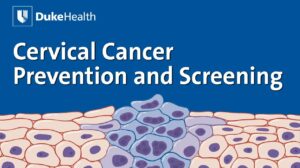NEW YORK (Reuters Health) – Revised guidelines on the assessment and management of reproductive complications in young female cancer survivors provide the latest evidence-based recommendations for evaluation and counseling, including psychological consultation when patients have emotional difficulties with sexual dysfunction.
The guidelines were first issued by the Children’s Oncology Group in 2003 to provide “risk-based, exposure-related guidelines for follow-up care after pediatric cancer treatment,” and the sections on female reproductive health are updated regularly.
“Risk of gonadal, reproductive, and sexual complications in female cancer survivors varies according to cancer type, age at diagnosis, and therapeutic exposure,” note Dr. Monika L. Metzger, at St. Jude Children’s Research Hospital in Memphis, Tennessee, and colleagues. “Oncologists should be aware of potential complications that may affect long-term reproductive and sexual health and discuss them in a developmentally appropriate way with patients and families before treatment.”
The latest iteration of the guidelines, published online February 4 in the Journal of Clinical Oncology, covers four main areas of reproductive complications or late effects of cancer treatment: hypogonadism, precocious puberty, reduced fertility, and sexual dysfunction.
The guidelines review cancer therapies associated with those complications, related risk factors, patient assessment, and further considerations.
For example, hypogonadism may result from chemotherapy, radiotherapy or surgery and is more likely to occur in older patients, with longer time since treatment, and with smoking. The guidelines recommend yearly physical examination until sexual maturity, and endocrinology/gynecology referral for delayed puberty or persistently abnormal hormone levels.
Precocious puberty, before age 8, may be an adverse effect of head or neck radiotherapy in younger patients. Apart from endocrine consultation and treatment as needed, the authors also recommend x-ray assessment of bone age in rapidly growing children.
Women with Wilms tumor are at particular risk for uterine vascular insufficiency caused by radiation treatment to the abdomen or pelvis, and are at consequent risk for adverse pregnancy outcome. For patients considering pregnancy after pubertal development, the panel recommends high-level ultrasound evaluation of the genitourinary tract.
Pelvic radiotherapy, GVHD after hematopoietic cell transplantation, pelvic surgery and spinal cord surgery are all risk factors for sexual dysfunction, the guidelines note. Annual history taking for factors such as vulvar pain or postcoital bleeding is recommended, as well as referral as needed for gynecologic management or psychological counseling.
The authors also review the status of pretreatment fertility preservation, but say options for prepubertal girls are experimental and should be offered only within a research setting. Nonetheless, they conclude, “Ongoing research on gonadoprotective drugs and improved shielding of reproductive organs may increase the effectiveness of fertility preservation for prepubertal and postpubertal female patients and optimize long-term reproductive health in childhood cancer survivors.”
SOURCE: Female Reproductive Health After Childhood, Adolescent, and Young Adult Cancers: Guidelines for the Assessment and Management of Female Reproductive Complications
J Clin Oncol 2013.




